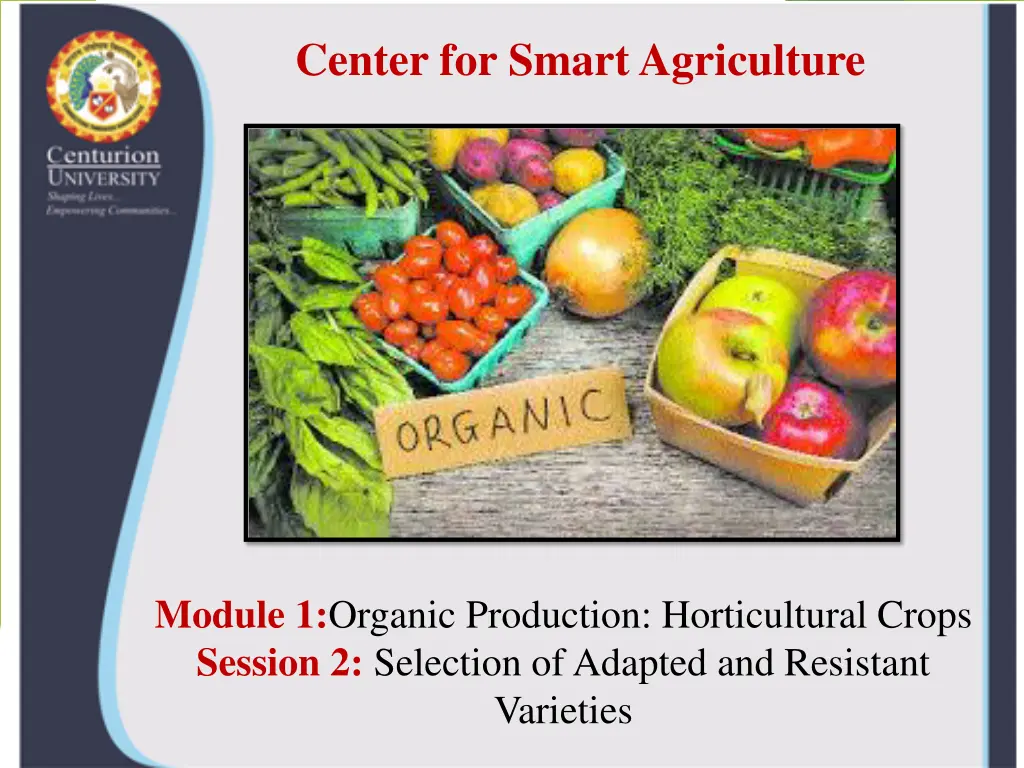
Smart Agriculture: Selecting Adapted and Resistant Varieties for Organic Horticultural Crops
Learn how knowledge about plant health and pest ecology aids in selecting preventive measures for crop protection, including the importance of adapted varieties, clean seeds, suitable cropping systems, and more in organic farming practices.
Download Presentation

Please find below an Image/Link to download the presentation.
The content on the website is provided AS IS for your information and personal use only. It may not be sold, licensed, or shared on other websites without obtaining consent from the author. If you encounter any issues during the download, it is possible that the publisher has removed the file from their server.
You are allowed to download the files provided on this website for personal or commercial use, subject to the condition that they are used lawfully. All files are the property of their respective owners.
The content on the website is provided AS IS for your information and personal use only. It may not be sold, licensed, or shared on other websites without obtaining consent from the author.
E N D
Presentation Transcript
Center for Smart Agriculture Module 1:Organic Production: Horticultural Crops Session 2: Selection of Adapted and Resistant Varieties
Knowledge about plant health and pest and disease ecology helps the farmer to choose effective preventive protection measures. crop As many factors influence the development of disease, it s crucial to step in at the most sensitive points. pest and This through the right timing of management suitable combination different methods, choice of a selective method. can be accomplished practices, a of the or
Some important preventive crop-protection measures are the following ones: Selection of adapted and resistant varieties Selection of clean seed and planting material Use of suitable cropping systems Mixed cropping systems: can limit pest and disease pressure as the pest has less host plants to feed on and more beneficial insect life in a diverse system. Crop rotation: reduces the chances of soil borne diseases and increases soil fertility. Green manuring and cover crops: increases the biological activity in the soil and can enhance the presence of beneficial organisms (but also of pests; therefore a careful selection of the proper species is needed). Inorganic farming, mono-cropping should be avoided and preferably 2-3 crops should be taken together. High-nutrient demanding crops, such as potato, cabbage, etc.,must be preceded or followed by legumes or planted as intercrops. Short duration legumes, such as vegetable creepers are favoured choices of farmers living near urban areas.
Some important preventive crop- protection measures Selection of adapted and resistant varieties Mixed cropping systems Crop rotation Selection of clean seed and planting material Green manuring and cover crops Avoiding Inorganic farming and mono cropping
The following points should be given importance for selection of suitable varieties inorganic farming: The main traits required under low-input conditions Current breeding programmes for organic, low-input agriculture Currently available breeding and/or selection approaches The benefits and potential negative side-effects of different breeding methodologies and their relative acceptability under organic farming principles






















